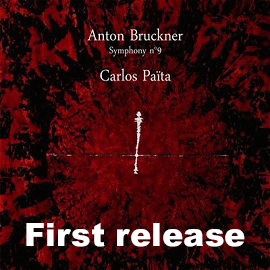Emilie Mayers Vierte Symphonie ist verschollen. Andreas N. Tarkmann hat sie überaus erfolgreich nach dem Klavierauszug rekonstruiert. Der erste Satz ist beschwingt und leidenschaftlich, gut gelaunt und in der neuen Orchestrierung ungemein farbig. Das Adagio bringt einen starken Kontrast, er erinnert mich an Schumann, er ist ausladend romantisch, ein bisschen geheimnis- und sehnsuchtsvoll mit schönen Dialogen zwischen dunklen Bläsern und hellen Streichern.
Es folgt ein tänzerisches, idyllisches Allegro, worauf ein zupackendes Presto die attraktive kurzweilige Symphonie beschließt.
Emilie Mayers Sechste Symphonie stammt aus dem Jahre 1853. Der erste Satz (Adagio – Allegro con spirito) beginnt ruhig und etwas feierlich. Dann wird die Musik lebhafter, und Willem de Vriend gewinnt ihr viele bewegungsreiche und farbige Musik ab.
Der zweite Satz (Marcia funebre. Andante maestoso) ist ruhig und nachdenklich, mit einzelnen tragischen Aufwallungen. Das rhythmisch sehr charakteristische Scherzo ist fröhlich, und während das Finale ebenfalls gute Laune zeigt, ja teilweise regelrecht übermütig wirkt, ist es recht dramatisch, vor allem aber ungemein einfallsreich.
Die engagierten Interpretationen lassen Mayers Musik in bestem Licht erscheinen. Sehr empfehlenswert!
Emilie Mayer’s Fourth Symphony is lost. Andreas N. Tarkmann has successfully reconstructed it from the piano reduction. The first movement is lively and passionate, good-humored and extremely colourful in the new instrumentation. The Adagio brings a strong contrast, it reminds me of Schumann, it is expansive, romantic, a little mysterious and full of longing with beautiful dialogues between dark winds and light strings.
This is followed by a dance-like, idyllic Allegro, after which a gripping Presto brings this attractive, entertaining symphony to a close.
Emilie Mayer’s Sixth Symphony dates from 1853. The first movement (Adagio – Allegro con spirito) begins quietly and somewhat solemnly. Then the music becomes more lively and Willem de Vriend creates a lot of lively and colorful music.
The second movement (Marcia funebre. Andante maestoso) is quiet and contemplative, with some tragic overtones. The rhythmically very characteristic Scherzo is cheerful, and while the finale also shows good humor, even seems exuberant at times, it is quite dramatic, but above all incredibly imaginative.
The committed interpretations present Mayer’s music in the best possible light. Highly recommended!






















